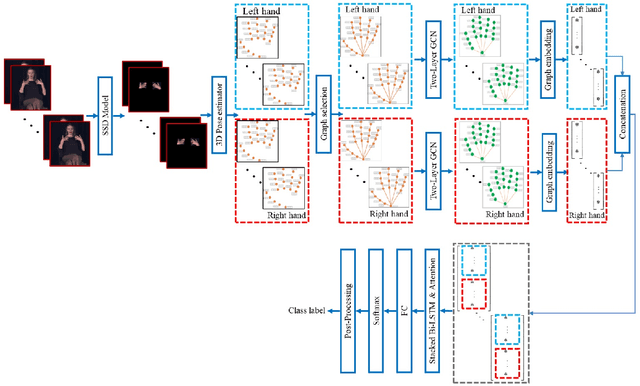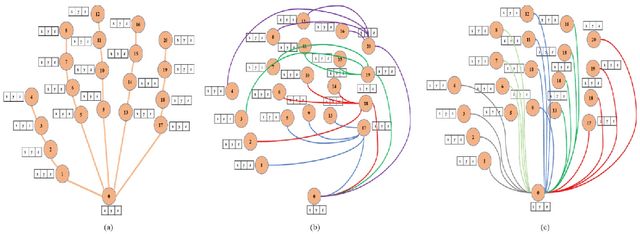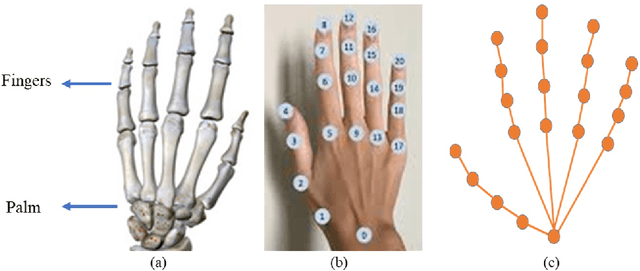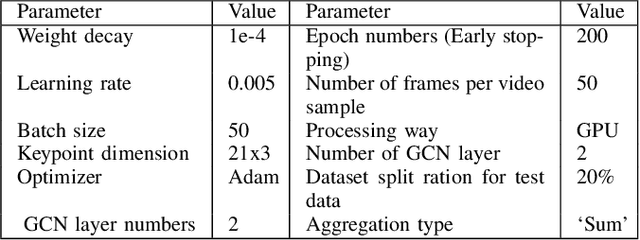A Non-Anatomical Graph Structure for isolated hand gesture separation in continuous gesture sequences
Paper and Code
Jul 15, 2022



Continuous Hand Gesture Recognition (CHGR) has been extensively studied by researchers in the last few decades. Recently, one model has been presented to deal with the challenge of the boundary detection of isolated gestures in a continuous gesture video [17]. To enhance the model performance and also replace the handcrafted feature extractor in the presented model in [17], we propose a GCN model and combine it with the stacked Bi-LSTM and Attention modules to push the temporal information in the video stream. Considering the breakthroughs of GCN models for skeleton modality, we propose a two-layer GCN model to empower the 3D hand skeleton features. Finally, the class probabilities of each isolated gesture are fed to the post-processing module, borrowed from [17]. Furthermore, we replace the anatomical graph structure with some non-anatomical graph structures. Due to the lack of a large dataset, including both the continuous gesture sequences and the corresponding isolated gestures, three public datasets in Dynamic Hand Gesture Recognition (DHGR), RKS-PERSIANSIGN, and ASLVID, are used for evaluation. Experimental results show the superiority of the proposed model in dealing with isolated gesture boundaries detection in continuous gesture sequences
 Add to Chrome
Add to Chrome Add to Firefox
Add to Firefox Add to Edge
Add to Edge